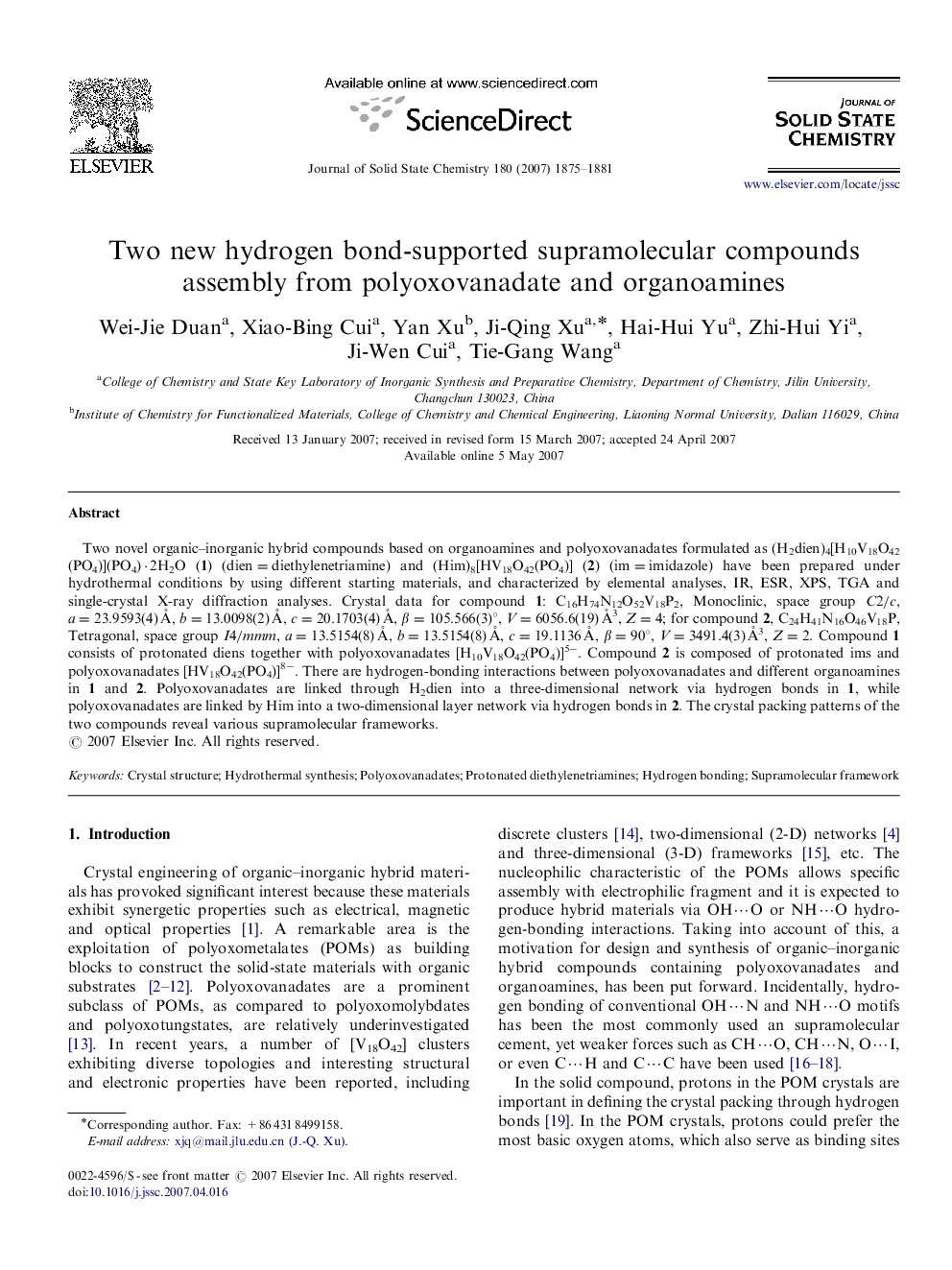| Article ID | Journal | Published Year | Pages | File Type |
|---|---|---|---|---|
| 1332631 | Journal of Solid State Chemistry | 2007 | 7 Pages |
Two novel organic–inorganic hybrid compounds based on organoamines and polyoxovanadates formulated as (H2dien)4[H10V18O42(PO4)](PO4)·2H2O (1) (dien=diethylenetriamine) and (Him)8[HV18O42(PO4)] (2) (im=imidazole) have been prepared under hydrothermal conditions by using different starting materials, and characterized by elemental analyses, IR, ESR, XPS, TGA and single-crystal X-ray diffraction analyses. Crystal data for compound 1: C16H74N12O52V18P2, Monoclinic, space group C2/c, a=23.9593(4) Å, b=13.0098(2) Å, c=20.1703(4) Å, β=105.566(3)°, V=6056.6(19) Å3, Z=4; for compound 2, C24H41N16O46V18P, Tetragonal, space group I4/mmm, a=13.5154(8) Å, b=13.5154(8) Å, c=19.1136 Å, β=90°, V=3491.4(3) Å3, Z=2. Compound 1 consists of protonated diens together with polyoxovanadates [H10V18O42(PO4)]5−. Compound 2 is composed of protonated ims and polyoxovanadates [HV18O42(PO4)]8−. There are hydrogen-bonding interactions between polyoxovanadates and different organoamines in 1 and 2. Polyoxovanadates are linked through H2dien into a three-dimensional network via hydrogen bonds in 1, while polyoxovanadates are linked by Him into a two-dimensional layer network via hydrogen bonds in 2. The crystal packing patterns of the two compounds reveal various supramolecular frameworks.
Graphical abstractTwo new organic–inorganic hybrid compounds based on [V18O42(PO4)] building blocks have been hydrothermally synthesized. 1 is the first 3-D supramolecular network structure consisting of [V18O42(PO4)] unit, while 2 possesses 2-D layered supramolecular structure.Figure optionsDownload full-size imageDownload as PowerPoint slide
